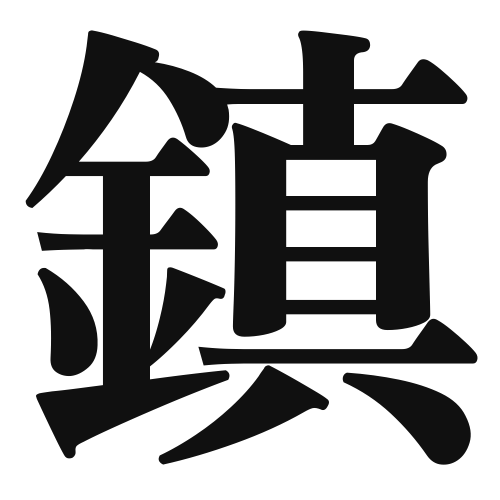1. Overview of Meaning
The kanji “鎮” (chin) generally means “to calm” or “to pacify.” It is often associated with the idea of tranquility and stability, particularly in the context of calming fears or disturbances.
2. Formation and Radical
Formation of the Kanji: The kanji “鎮” is a compound character (会意文字) that combines elements to convey its meaning. It consists of the radical for “metal” (金) on the left, indicating something related to metal or strength, and the character “鎮” on the right, which suggests the idea of calming or settling.
Radical: The radical of “鎮” is 金 (kin), which relates to metal, reflecting the character’s connection to strength and stability.
3. Examples of Usage
Common Words and Phrases: Some common words that include “鎮” are 鎮静 (chinsei – tranquility), 鎮守 (chinju – guarding), and 鎮痛剤 (chintouzai – painkiller).
Example Sentences in Daily Conversation:
- このお薬は痛みを鎮めるのに役立ちます。 (This medicine helps to calm the pain.)
- 彼は心を鎮めるために深呼吸をしました。 (He took a deep breath to calm his mind.)
4. Synonyms and Antonyms
Similar Kanji: A similar kanji is “静” (sei), which also means “calm” or “quiet,” but it emphasizes stillness rather than the act of calming.
Opposite Kanji: An antonym is “騒” (sou), which means “to disturb” or “to make noise,” representing the opposite of calmness.
5. Cultural and Historical Background
Connection to Japanese Culture: In Japanese culture, the concept of “鎮” is often linked to practices of meditation and rituals aimed at achieving peace and tranquility. It is also associated with various traditional ceremonies that seek to calm spirits or energies.
Proverbs and Idioms: One common saying is “心を鎮める” (kokoro o shizumeru), which means “to calm one’s heart,” emphasizing the importance of inner peace in daily life.
